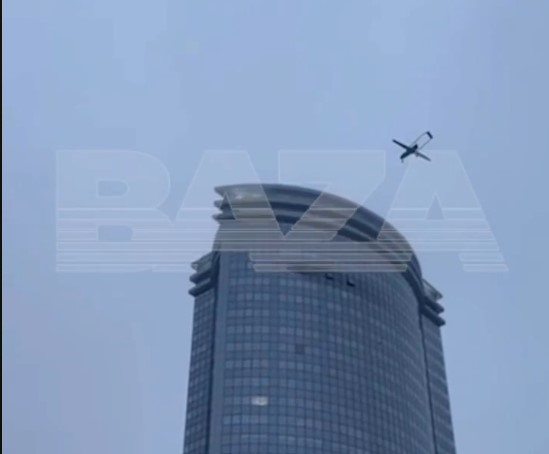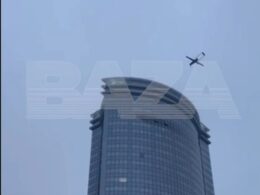Russian ruler Vladimir Putin has pledged retaliation after Ukrainian drones struck the city of Kazan in the Tatarstan region, threatening to bring more "destruction" to Kyiv. However, Russia lacks the capacity for significant escalation, said Serhii Zgurets, the head of Defense Express, according to Espreso.
In recent months, Russia has intensified its drone attacks on Ukraine, utilizing various types of drones, including Iranian-made Shaheds, to strike critical infrastructure and urban areas. Conversely, Ukraine has also ramped up its drone capabilities, launching long-range strikes deep into Russian territory. Notable attacks have targeted fuel plants, logistics hubs, and ammunition depots.
On 21 December, a series of drone strikes hit Kazan, with at least seven explosions targeting the city. Some struck residential areas, including a 32-story luxury building, while Russian authorities also reported damage to an industrial facility.
Kazan, located in Russia's Republic of Tatarstan, hosts the Kazan Powder Plant, a critical enterprise in the country's military-industrial complex. It specializes in producing explosives, missile propellants, and other key components for the Russian military, Ukrainska Pravda informs.
Andrii Kovalenko, head of the Center for Countering Disinformation under Ukraine's National Security and Defense Council, noted that the plant is essential
for supplying munitions and materials for missiles, including Kalibr and Iskander systems.
Local residents reported hearing loud blasts from the plant throughout the day.
Russian President Vladimir Putin threatened that Ukraine would face destruction after the attacks, ignoring the extensive damage inflicted on Ukraine during nearly three years of its all-out war.
At this point, there's no sense in trying to intimidate Ukraine, as Russia has essentially exhausted all its arsenals except for nuclear weapons, said Serhii Zgurets from Defense Express.
"This includes strategic bombers with cruise missiles, the full range of long-range weaponry like pseudo-hypersonic Kinzhal missiles, and even attempts at psychological intimidation with systems like Oreshnik. All of these have already been deployed by Russia. I see no new capacity for Russia to escalate strikes on our cities, as their operational intensity has already peaked," he emphasized.
On 23 December, Ukraine’s Defense Intelligence agency (HUR) reported that a warehouse containing components for Iranian-designed attack drones was destroyed at Russia’s Alabuga Special Economic Zone in Tatarstan.
The zone hosts the Yelabuga drone factory, located approximately 1,200 kilometers from the Russia-Ukraine border. Launched in July 2023, the facility produces both localized Iranian-designed Shahed drones and Albatross reconnaissance drones, using both local and foreign workers.
The intelligence directorate estimated the losses at $16 million and described the incident as “another blow to the terrorist Russia’s military-industrial complex.”
In April 2024, the authorities of Tatarstan reported drone attacks on facilities in Yelabuga and Nizhnekamsk. The attacks caused explosions and resulted in casualties. Ukrainian intelligence sources informed Ukrainska Pravda that the strikes were carried out by Ukraine’s HUR using large, aircraft-like drones.
After those strikes, Putin didn't make any public statements. However, following Russia's use of a Kedr intermediate-range missile, called by Russia's president as "Oreshnik," on Ukraine's city of Dnipro, his threats towards Kyiv have intensified.
Related:
- Ukraine builds new brigades instead of reinforcing old units. Here’s why
- WSJ: Russia provided satellite data to Houthis for commercial vessel attacks
- India secures release of 85 citizens from Russian Army, 20 still await discharge
- ISW: Russia’s ability to sustain prolonged offensive operations in question





